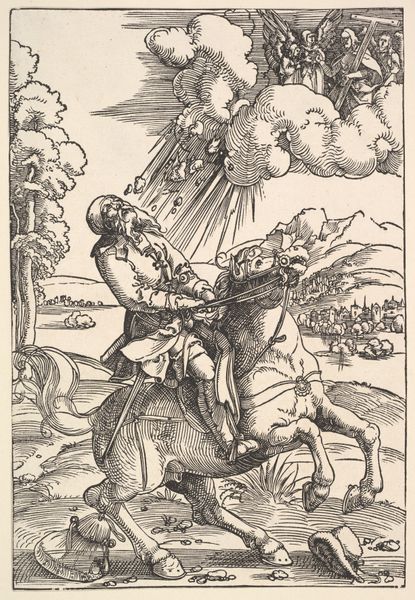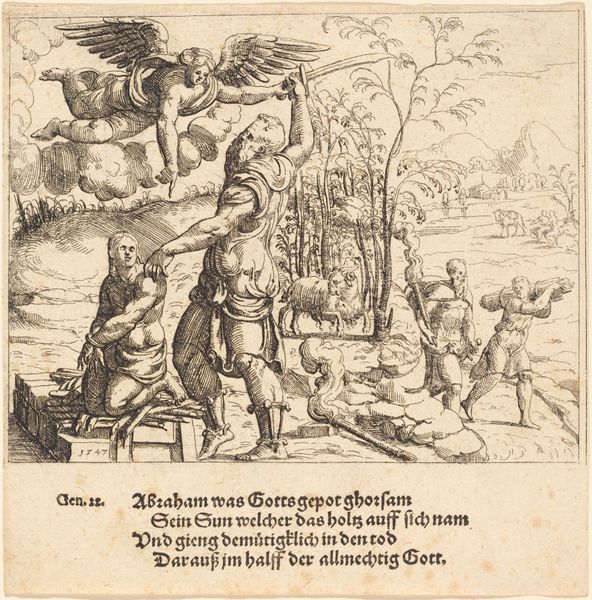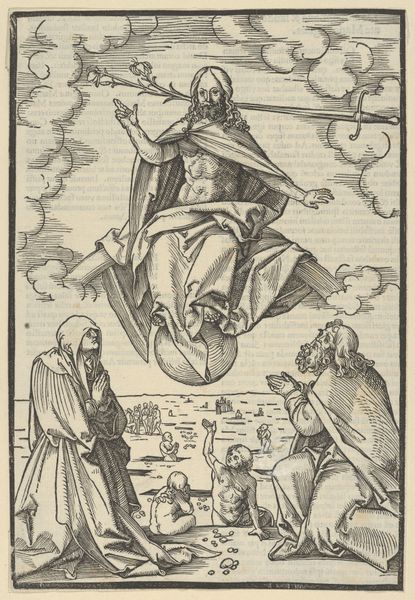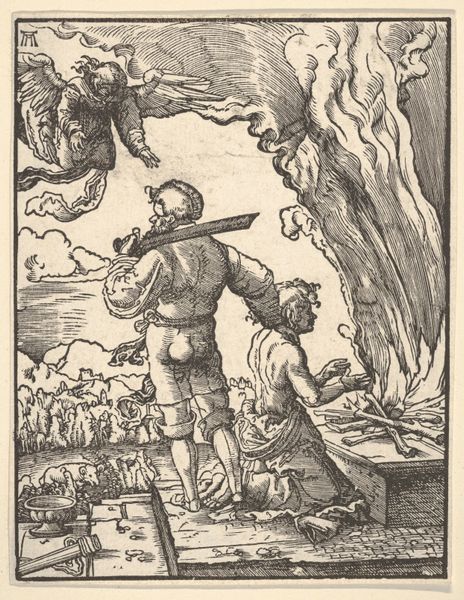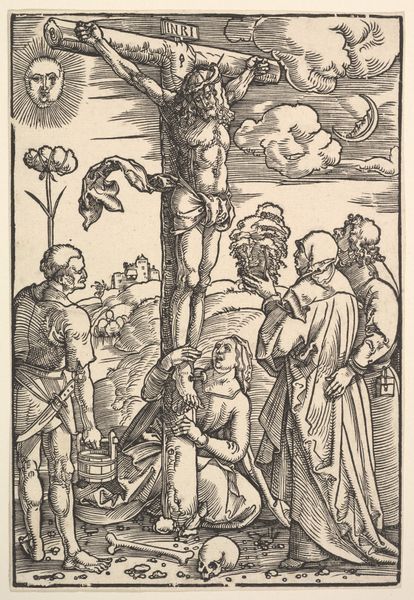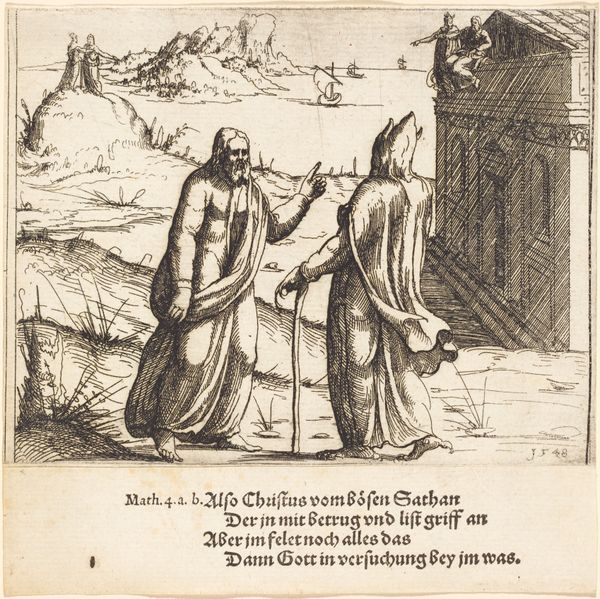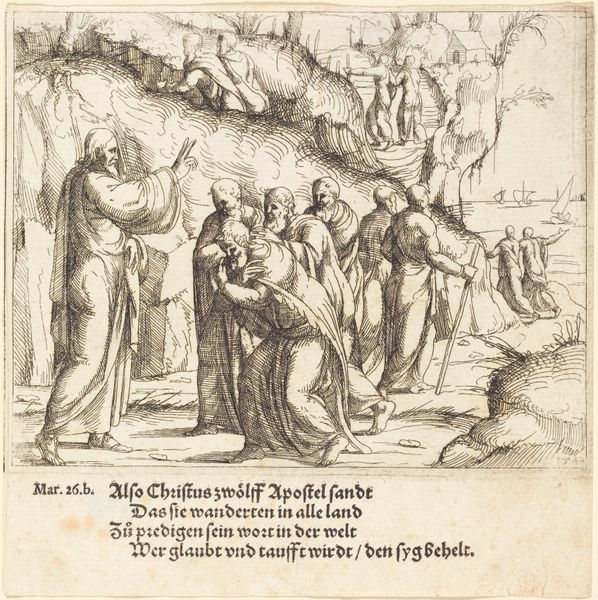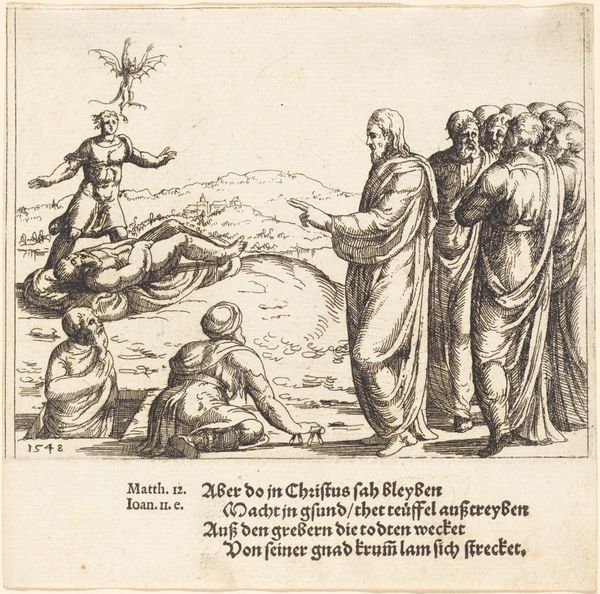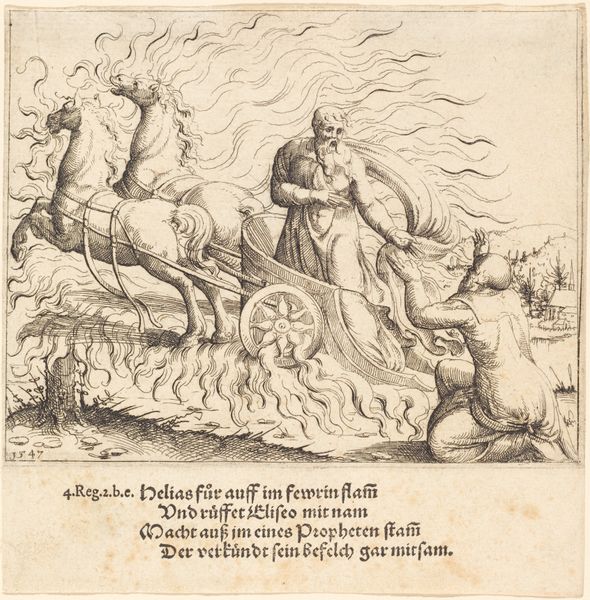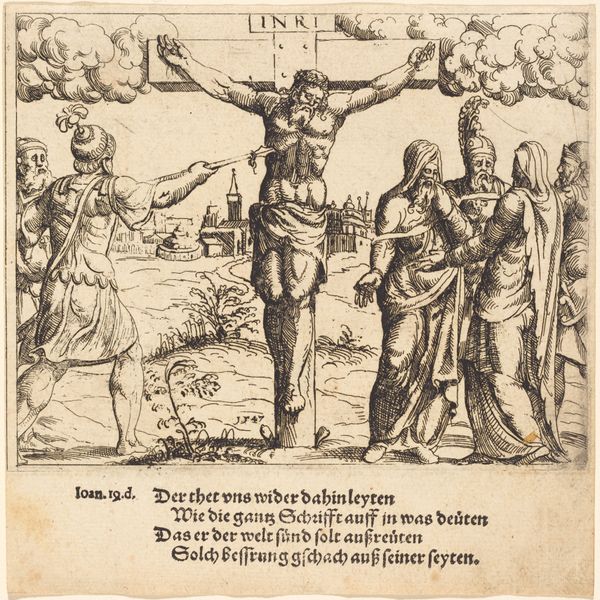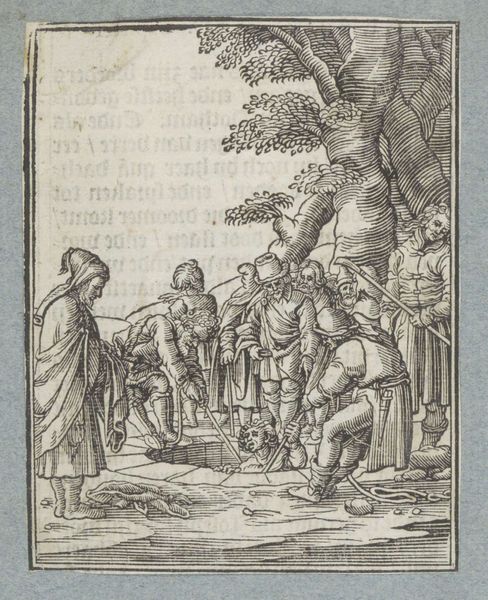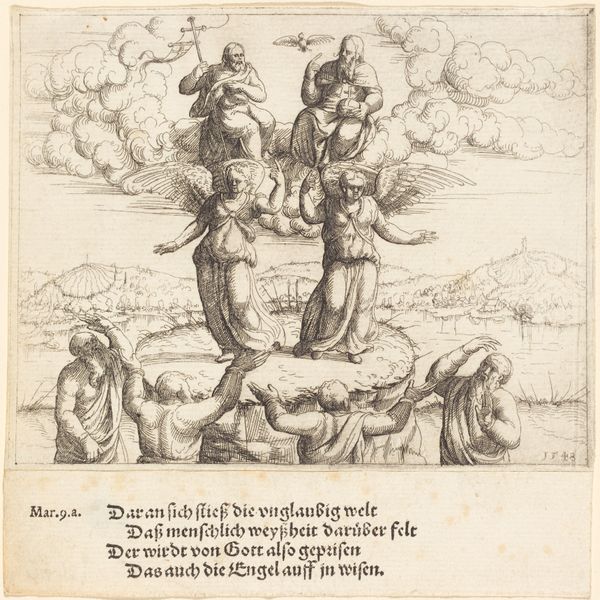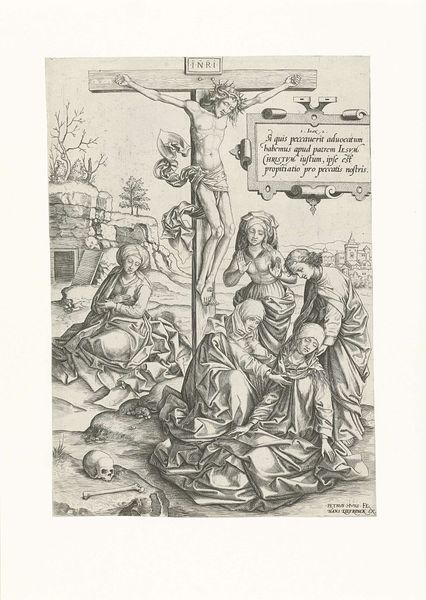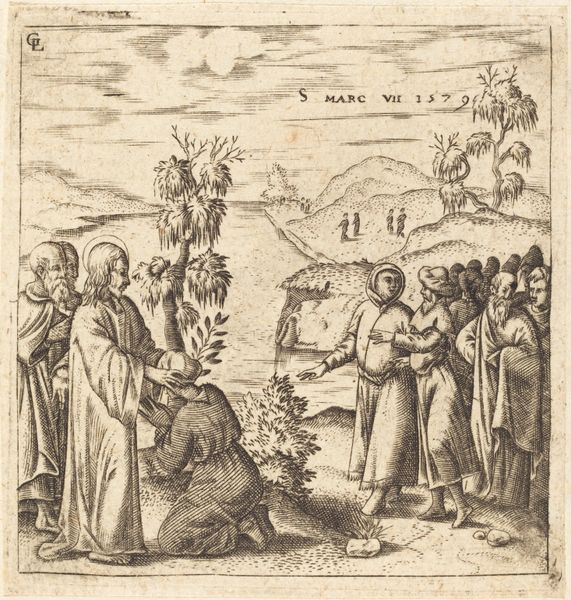
print, engraving
# print
#
figuration
#
11_renaissance
#
line
#
history-painting
#
northern-renaissance
#
engraving
Copyright: National Gallery of Art: CC0 1.0
Editor: This is "The Baptism of Christ," an engraving by Augustin Hirschvogel, made in 1547. It's incredibly detailed for such a small print; the landscape receding into the distance, the expressions on each figure. How do you interpret this work, focusing on the material and production aspect? Curator: What strikes me is the deliberate use of engraving, a process demanding skilled labor and precise tooling. The sharp lines and controlled gradations of tone speak to a printmaker deeply invested in their craft. Consider the context: this was made at a time when printmaking was becoming increasingly vital for disseminating religious ideas and knowledge. Editor: So the very act of creating this engraving, its reproducibility, plays into its message? Curator: Exactly. The work’s meaning is embedded in its material form. Hirschvogel chose engraving—a relatively accessible medium—to communicate this crucial theological event to a wider audience, circumventing traditional channels. Note, too, how the medium might suggest that religious enlightenment may have had popular availability via mass production. Does the detail draw your attention to this idea? Editor: I see what you mean. Before, I focused on the religious aspect. Now I see that its value is not just representational. The fact that this image could be reproduced and widely distributed changes my perception. The labor is made tangible and that is intriguing. Curator: Precisely. The artist is not merely depicting the baptism, they are participating in the wider production of meaning and dissemination of ideas in society through material output. This democratizes the divine event, challenging the exclusive control traditionally held by the church. Editor: This makes me reconsider the relationship between religious art and the means of its creation and distribution. It’s like the printing press empowered the Reformation, making belief more material and shareable. Curator: It shifts our focus from symbolism to how meaning is actively produced through a complex interplay of artistic skill, material processes, and socio-historical context.
Comments
No comments
Be the first to comment and join the conversation on the ultimate creative platform.
